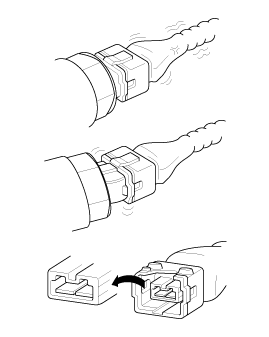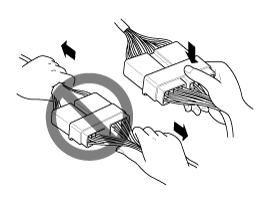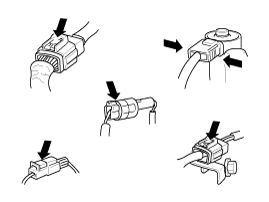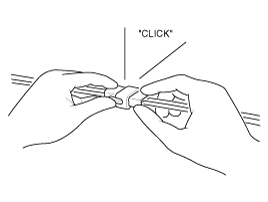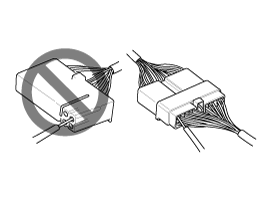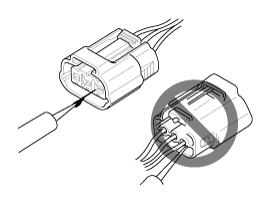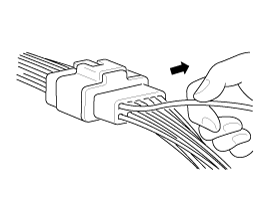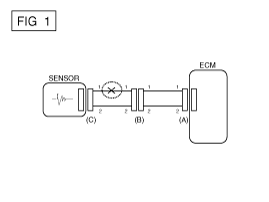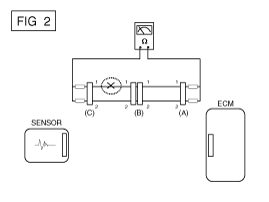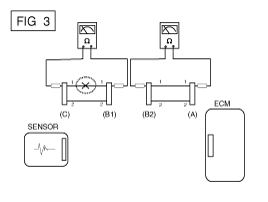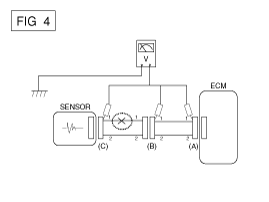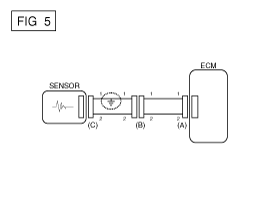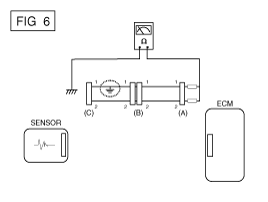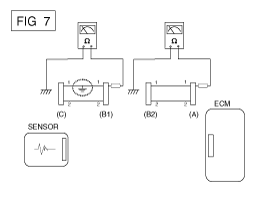Kia Soul EV: EV Battery System / Troubleshooting
Kia Soul EV (PS EV) 2015-2020 Service Manual / EV Battery System / Troubleshooting
| Basic Troubleshooting |
Basic Inspection Procedure
Measuring Condition of Electronic Parts'' Resistance
The measured resistance at high temperature after vehicle
running may be high or low. So all resistance must be measured at
ambient temperature (20°C, 68°F), unless stated otherwise.
The measured resistance to temperature other than ambient temperature (20°C, 68°F) is for reference only.
|
Intermittent Problem Inspection Procedure
Sometimes the most difficult case in troubleshooting is when a
problem symptom occurs but does not occur again during testing. An
example would be if a problem appears only when the vehicle is cold but
has not appeared when warm. In this case, the technician should
thoroughly make out a "Customer Problem Analysis Sheet" and recreate
(simulate) the environment and condition which occurred when the vehicle
was having the issue.
| 1. |
Clear Diagnostic Trouble Code (DTC). |
| 2. |
Inspect connector connection, and check terminal for poor
connections, loose wires, bent, broken or corroded pins, and then verify
that the connectors are always securely fastened.
|
| 3. |
Slightly shake the connector and wiring harness vertically and horizontally. |
| 4. |
Repair or replace the component that has a problem. |
| 5. |
Verify that the problem has disappeared with the road test. |
? Simulating Vibration
| a. |
Sensors and Actuators
: Slightly vibrate sensors, actuators or relays with finger.
|
| b. |
Connectors and Harness
: Lightly shake the connector and wiring harness vertically and then horizontally. |
? Simulating Heat
| a. |
Heat components suspected of causing the malfunction with a hair dryer or other heat source.
|
? Simulating Water Sprinkling
| a. |
Sprinkle water onto vehicle to simulate a rainy day or a high humidity condition.
|
? Simulating Electrical Load
| a. |
Turn on all electrical systems to simulate excessive electrical loads (Radios, fans, lights, rear window defogger, etc.).
|
Connector Inspection Procedure
| 1. |
Handling of Connector
|
| 2. |
Checking Point for Connector
|
| 3. |
Repair Method of Connector Terminal
|
Wire Harness Inspection Procedure
| 1. |
Before removing the wire harness, check the wire harness position and crimping in order to restore it correctly. |
| 2. |
Check whether the wire harness is twisted, pulled or loosened. |
| 3. |
Check whether the temperature of the wire harness is abnormally high. |
| 4. |
Check whether the wire harness is rotating, moving or vibrating against the sharp edge of a part. |
| 5. |
Check the connection between the wire harness and any installed part. |
| 6. |
If the covering of wire harness is damaged; secure, repair or replace the harness. |
Electrical Circuit Inspection Procedure
? Check Open Circuit
| 1. |
Procedures for Open Circuit
If an open circuit occurs (as seen in [FIG. 1]), it can be
found by performing Step 2 (Continuity Check Method) or Step 3 (Voltage
Check Method) as shown below.
|
| 2. |
Continuity Check Method
|
| 3. |
Voltage Check Method
|
? Check Short Circuit
| 1. |
Test Method for Short to Ground Circuit
If short to ground circuit occurs as shown in [FIG. 5], the
broken point can be found by performing Step 2 (Continuity Check Method
with Chassis Ground) as shown below.
|
| 2. |
Continuity Check Method (with Chassis Ground)
|
? Testing For Voltage Drop
This test checks for voltage drop along a wire or through a connection or a switch.
| A. |
Connect the positive lead of a voltmeter to the end of the
wire (or to the side of the connector or switch) closest to the battery. |
| B. |
Connect the negative lead to the other end of the wire. (or the other side of the connector or switch) |
| C. |
Operate the circuit. |
| D. |
The voltmeter will show the difference in voltage between the
two points. A difference, or drop of more than 0.1 volts (50mV in 5V
circuits), may indicate a problem. Check the circuit for loose or dirty
connections. |
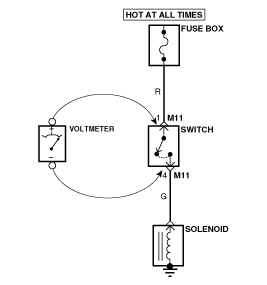
 Special Service Tools
Special Service Tools
Special Service Tools
Tool Name / NumberIllustrationDescriptionHigh Voltage Power Extension Cable0K918-E4100Used for measuring the high voltage battery systemHigh Voltage Battery Check Extension ...
Other information:
Kia Soul EV (PS EV) 2015-2020 Service Manual: Main Crash Pad Assembly Components and Components Location
Component Location 1. Main crash pad assembly ...
Kia Soul EV (PS EV) 2015-2020 Service Manual: Tail Gate Assembly Repair procedures
Replacement • Wear gloves to protect hands from injury. • When removing and installing the tail gate, work in a group of two or more. 1. Remove the tail gate trim. (Refer to Tail Gate - "Tail Gate Trim") 2 ...
Copyright © www.ksoulev.com 2020-2025



